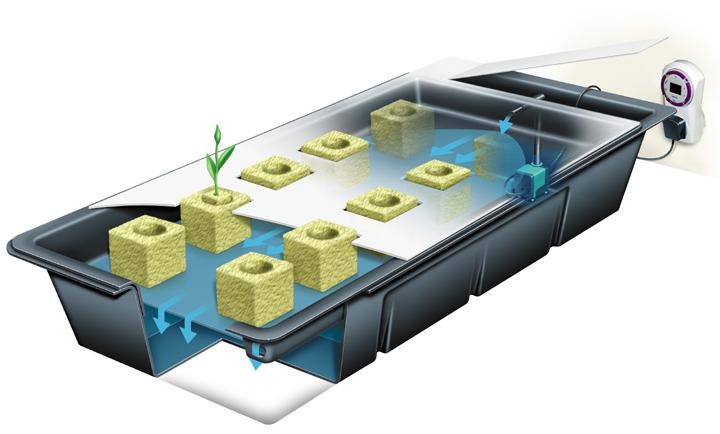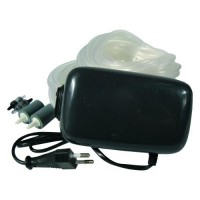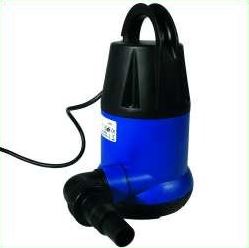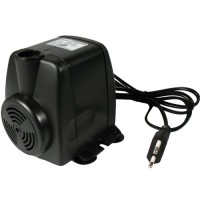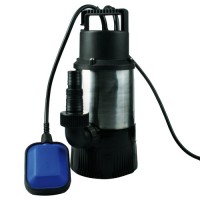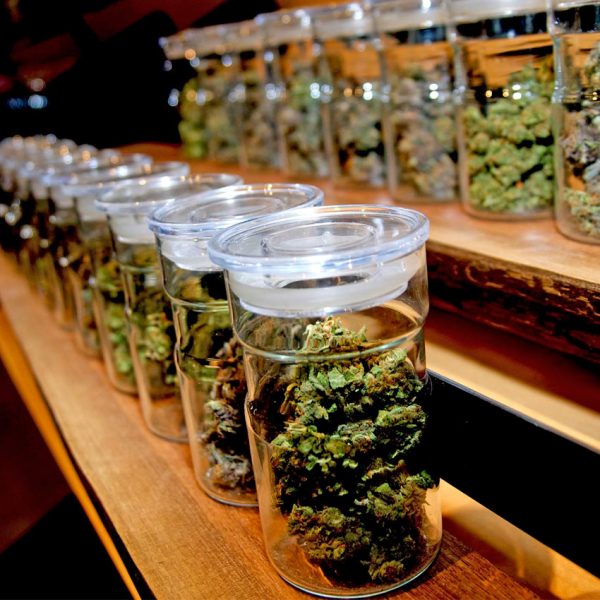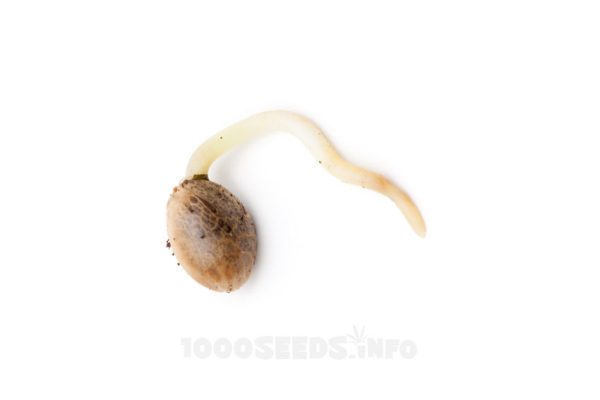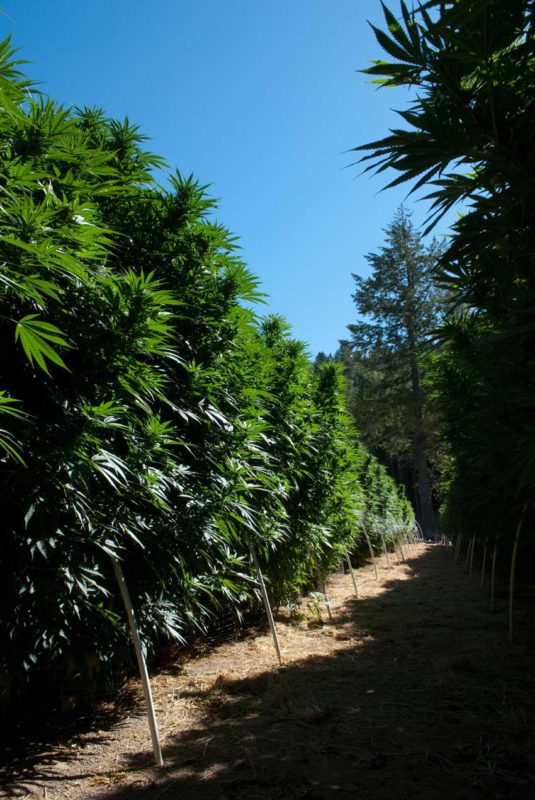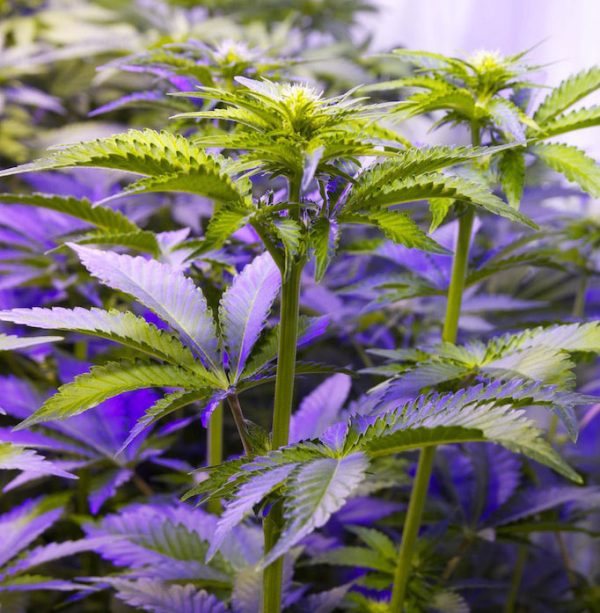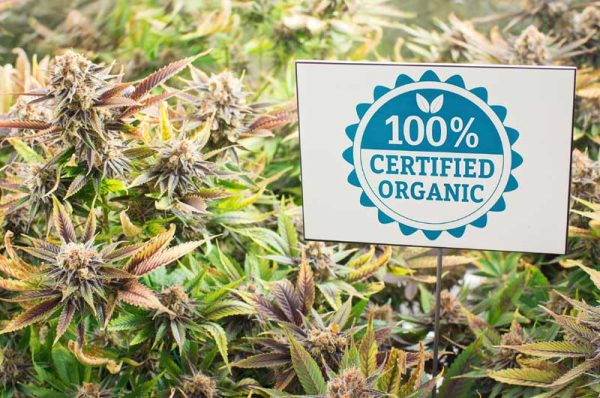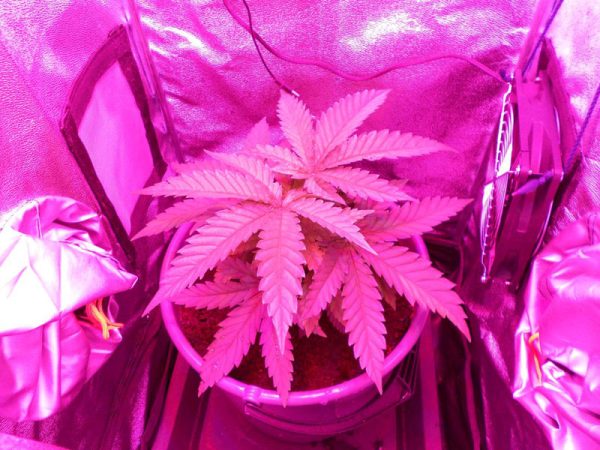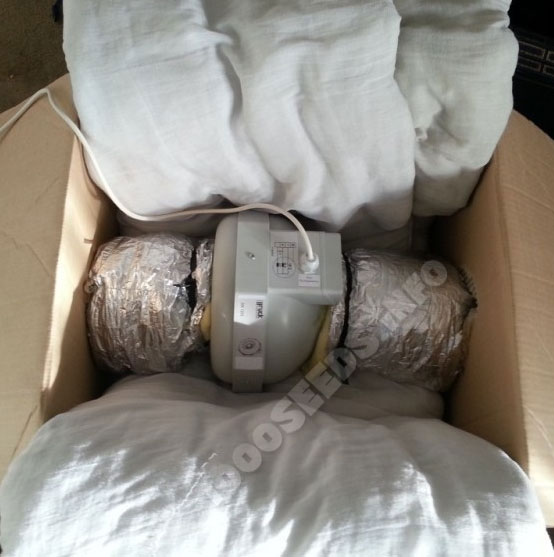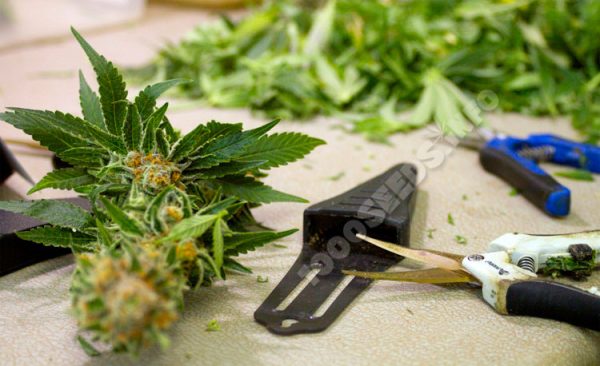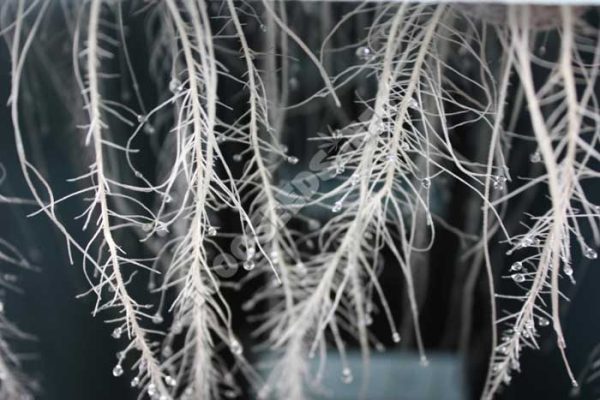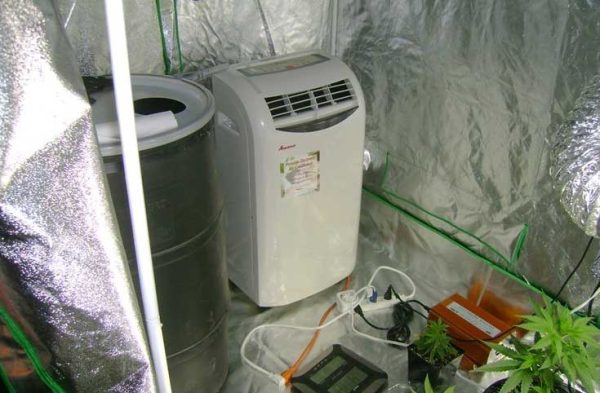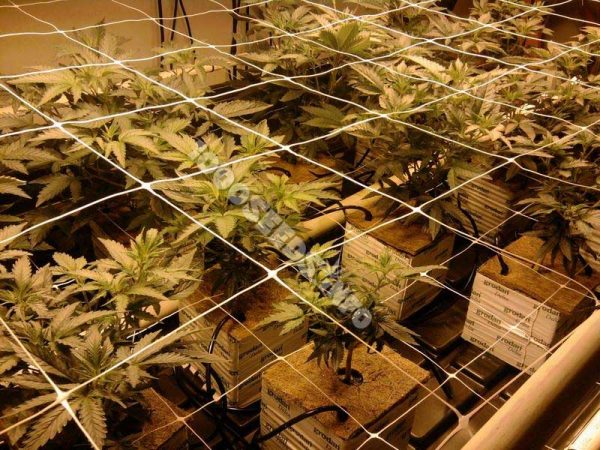How do I water cannabis automatically?
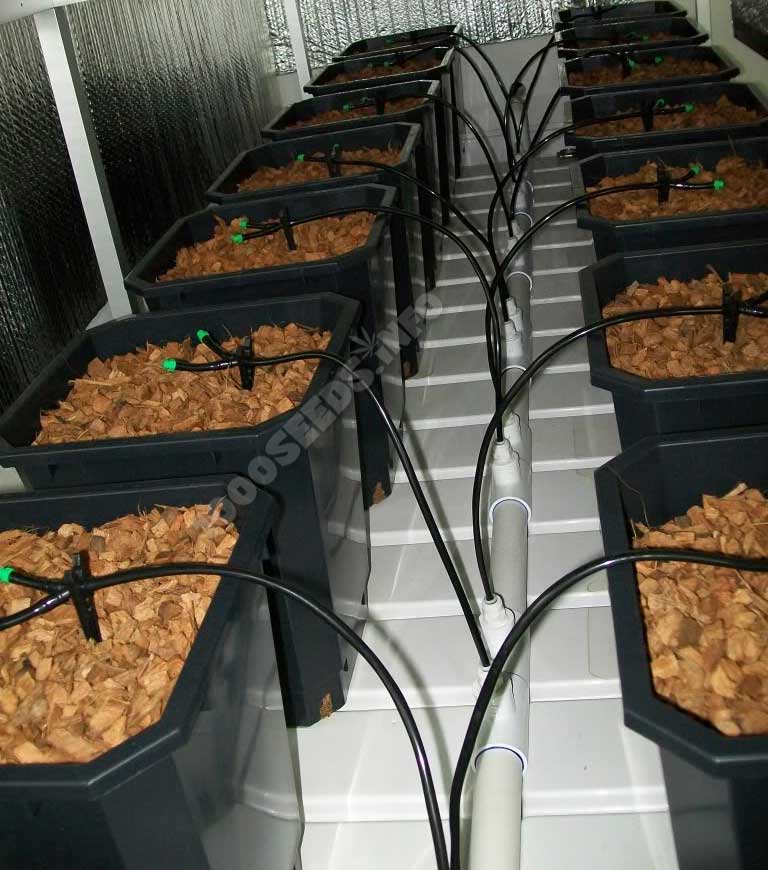
For watering, i.e. supplying the plants with water and nutrients, the grower has various options. The simplest, but often very strenuous, option is watering by hand. However, this is not always possible with a SoG (Sea of Green) with often 100 pots and more, this can be very tedious or even impossible. But even with fewer plants, many gardeners like to resort to automatic watering for reasons of time; in hydroponic cultivation with substrates such as rock wool, it is even absolutely necessary. There are different types of irrigation systems for different needs. The most important systems are briefly presented here; more detailed information on correct watering can be found in Fertilising and watering cannabis correctly, The optimal pH-value and EC value for growing.
Drip irrigation
From a main pipe, which is fed from a nutrient tank with the help of a pump, smaller pipes, the so-called spaghetti hoses, run off, which supply each plant individually with nutrients. A timer controls the circulation and thus the amount of water.
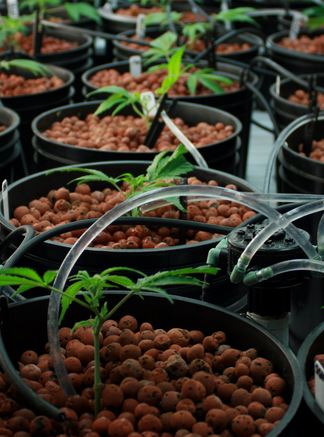 Drip irrigation is mainly used to water hydroponic subtrates such as coco or rockwool, but can also be used for soil. However, because of the poor water distribution in the soil, 2 or better 3 drippers per pot should be used.
Drip irrigation is mainly used to water hydroponic subtrates such as coco or rockwool, but can also be used for soil. However, because of the poor water distribution in the soil, 2 or better 3 drippers per pot should be used.
However, drip systems are mainly used in hydroponics, as already mentioned. Such a system consists of long, rectangular boxes in which mats of rock wool or coconut are placed. The cuttings cubes with the rooted plants are placed on the mats. The nutrient solution is fed to the cutting cubes via the spaghetti tubes. The excess nutrient solution either runs back into the tank (recirculating system) or is disposed of (waste to drain). Drip systems are reliable and relatively easy to operate and therefore well suited for beginners. However, it is important to set the right amount of water, i.e. how often and for how long the pump pumps the nutrient solution through the pipes to the plants. Too much nutrient solution can drown the roots, they can die because of the lack of oxygen. Too little watering, on the other hand, can cause the salts to accumulate in the medium, which hinders the roots' nutrient uptake and also kills them.
<<hier gehts zu den Bewässerungssystemen>>
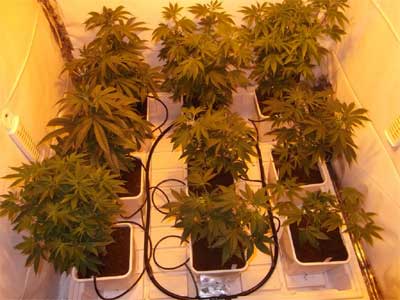
Dripping system, with a drip system plants can be watered cheaply and easily indoors. Click here for Other drip irrigation systems.
NFT (Nutrient Film Technique)
It was developed in England in the 1960s as the first true hydroponic system. The NFT is a recirculating system. The plants are usually grown in Rock wool cubes or, more rarely, in hydrocorrels on a special NFT table or in troughs. A thin film of nutrient solution constantly runs over the table and washes around the roots. The plants are thus constantly supplied with water and nutrients and large parts of them hang in the air and can take up plenty of oxygen. The disadvantage is the lack of water storage by the substrate. What is desirable on the one hand is a huge problem on the other, should the nutrient solution supply fail. Already after several hours without watering, the plants die.
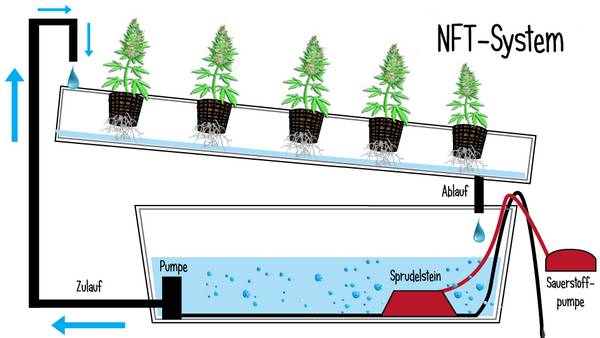
An NFT system consists of an NFT table and a storage tank. The nutrient solution is transported by a pump to the higher side of the table, then runs as a thin film to the other side and from there back into the tank. A root fleece is laid out on the NFT table and the plants are placed on it. The nutrient solution is enriched in the storage tank with an oxygen pump so that no algae can form.
You can find more on this topic in our Hydroponic series
Gro tank, NFT system
<<hier gehts zu den NFT-Systemen>>
Ebb and flow
With this system, the nutrient solution is brought to the plants in the root area from below at regular intervals. Due to the slow descent and ascent of the water level, the ebb and flow system enables an optimal supply of oxygen to the roots, which is absolutely essential for perfect and healthy growth. Here too, the watering cycle is particularly critical, as the roots can be damaged by too much moisture or too much drying out. However, one should bear in mind that this system does not offer any protection for the roots and is therefore only conditionally suitable for novice growers.
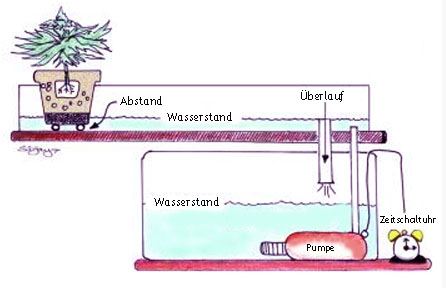
With this system, the cannabis plants stand in a large tank, the ebb and flow table, the bottom of which is completely flooded. At regular intervals, the nutrient solution is pumped into the root zone, after which the pump switches off and the nutrient solution runs back into the tank, which is usually located directly under the table. To give the plants support, various substrates such as Rock wool or Expanded clay can be used. It is also possible to work completely without medium, in which case a cover is placed over the tank through which the young plants are inserted.
You can find more on this topic in our Hydroponic series
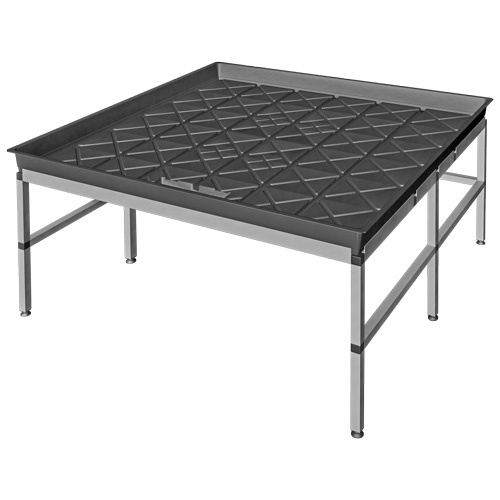
<<hier gehts zu den Ebbe und Flut Systemen>>
Which pump for the grow?
When using pumps for irrigation, one should pay attention to good quality. Since these pumps run permanently, cheap pumps are often susceptible and fail after a short time. There must also always be enough water in the tank during operation so that the pumps never run dry. If pumps are operated too long without water, they run hot and burn out.
Air pumps are used in hydroponics. They are used to pump oxygen into the nutrient tank. The pump is located outside the tank and pumps the oxygen into the reservoir via a pipe. But some systems on expanded clay, such as the Aqua-Farm, also run with negative pressure and use an air pump for this. Deep-water systems also need these air pumps because otherwise the plants would die within a very short time in the nutrient solution in which they are standing, literally suffocating and unable to live.
As the name suggests, you simply immerse a submersible pump in the liquid to be pumped. For hydropoinic use, they do not need a float switch as they are controlled by a timer or watertimer. The correct sizing depends on the size of the system and the drippers or sprayers used. The submersible pump cannot actually be too big, often it is dimensioned too small and the system does not have the desired performance.
Circulation pumps are basically just small submersible pumps that are placed at the bottom of the nutrient container. They ensure that the different ingredients in the nutrient tank do not settle and are always well mixed. Therefore, even the smallest submersible pumps are sufficient for this purpose, but these pumps are in continuous use, so that cheap DIY store pumps quickly go to pieces. The pump should be easy to dismantle for cleaning.
High-pressure pumps are available as submersible or centrifugal pumps. They work with higher pressure and are actually only used for very large systems, but they also make sense if you use sprinklers, because they usually need higher pressure. The centrifugal pump is placed outside the irrigation barrel and attached to the barrel via a hose with a connector, while the high-pressure submersible pump is placed in the tank like a conventional submersible pump.






